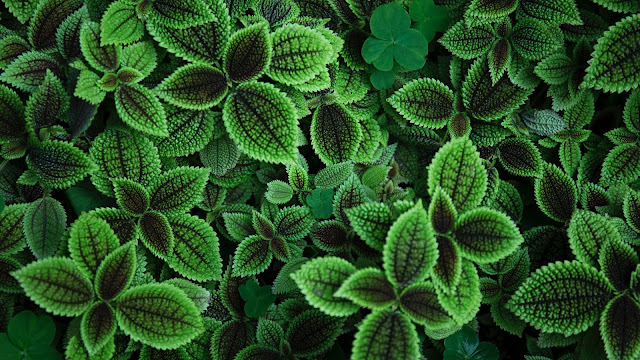Essential Oils: Peppermint Edition
Benefits of peppermint:
Not only is peppermint oil one of the oldest European herbs used for medicinal purposes, other historical accounts date its use to ancient Japanese and Chinese folk medicine. The many peppermint oil uses have been documented back to 1,000 B.C. and have been found in several Egyptian pyramids.
Today, peppermint oil is recommended for its anti-nausea benefits and soothing effects on the gastric lining and colon. It’s also valued for its cooling effects and helps to relieve sore muscles when used topically. In addition to this, peppermint essential oil displays antimicrobial properties, which is why it can be used to fight infections and even freshen your breath. Pretty impressive, right?
Peppermint oil is one of the most versatile essential oils out there. It can be used aromatically, topically and internally to address a number of health concerns, from muscles aches and seasonal allergy symptoms, to low energy and digestive complaints. It’s also commonly used to boost energy levels and improve both skin and hair health.
According to a review conducted by the USDA Human Nutrition Research Center on Aging at Tufts University, peppermint has significant antimicrobial and antiviral activities. It also works as a strong antioxidant, displays anti-tumor actions in lab studies, shows anti-allergenic potential and pain-killing effects, helps to relax the gastrointestinal tract and may be chemo-preventive.
It’s no wonder why peppermint oil is one of the most popular essential oils in the world and why I recommend that everyone has it in his or her medicine cabinet at home.
According to the University of Maryland Medical Center, peppermint improves the flow of bile by calming down the muscles of the stomach. Once this happens, food can pass more freely and quickly through the stomach. This can also cut down on gas, bloating, and diarrhea.
Rubbing a few drops of peppermint oil on the forehead and temples can ease headache pain in as little as 15 minutes and keep throbbing away for up to an hour. It’s been found to improve circulation and relax muscle tension.
Some of the many uses, benefits, and secrets of peppermint oil include:
- Relives Muscles and Joint Pain - Peppermint essential oil is a very effective natural painkiller and muscle relaxant. It also has cooling, invigorating and antispasmodic properties. Simply apply 2–3 drops of peppermint oil topically to the area of concern three times daily or add 5 drops to a warm water bath with Epsom salt
- Eases Sinus and Respiratory Issues - Inhaling diffused peppermint oil can help to unclog your sinuses and offer relief from a scratchy throat. Peppermint acts as an expectorant, helping to open your airways, clear mucus and reduce congestion, and is one of the best essential oils for colds, the flu, cough, sinusitis, asthma, bronchitis and other respiratory conditions. Mix peppermint oil it with coconut oil and eucalyptus oil to make my Homemade Vapor Rub. You can also diffuse 5 drops of peppermint or apply 2–3 drops topically to your temples, chest and back of neck.
- Increases Energy - For a holistic alternative to dangerous (sometimes toxic) energy drinks, take a few whiffs of Peppermint! It will help to boost your energy levels on long road trips, in school or any other time you need to “burn the midnight oil.” Peppermint oil may also help to improve memory and alertness when inhaled. To boost your energy levels and improve concentration with peppermint oil, take 1–2 drops internally with a glass of water, or apply 2–3 drops topically to your temples and back of neck.
- Improve IBS Symptoms - According to the University of Maryland Medical Center, peppermint improves the flow of bile by calming down the muscles of the stomach. Once this happens, food can pass more freely and quickly through the stomach. This can also cut down on gas, bloating, and diarrhea. Take 1-2 drops of peppermint oil internally with a glass of water, or mix 2-3 drops of peppermint oil and coconut oil together and apply to your abdomen to relieve IBS symptoms.
- Freshen Breath - Tried-and-true for well over 1,000 years, mint oil has been used to naturally freshen breath. This is probably due to the way peppermint oil kills bacteria and fungus that can lead to cavities or infection.
- Relieve Itchiness - Living with itchiness can be a pain. To help relieve itching with peppermint, simply apply 2–3 drops topically to the area of concern or add 5–10 drops to a warm water bath. If you are using peppermint on sensitive skin, combine it with equal parts carrier oil before topical application.
- Repels Bugs Naturally - A review of plant-based insect repellents published in Malaria Journal found that the most effective plant essential oils used in bug repellents include peppermint, lemongrass, geraniol, pine, cedar, thyme and patchouli and clove. These oils have shown to repel malaria, filarial and yellow fever vectors for 60–180 minutes.
- Reduce Nausea - To get rid of nausea, simply inhale peppermint oil directly from the bottle, add one drop of peppermint oil to a glass of distilled water or rub 1–2 drops behind your ears.
- Boost Skin Health - Peppermint oil has calming, softening, toning and anti-inflammatory effects on the skin when it’s used topically. Peppermint oil also has antiseptic and antimicrobial properties. To improve the health of your skin and use peppermint oil as a home remedy for acne, mix 2–3 drops of peppermint with equal parts lavender essential oil and apply the combination topically to the area of concern.
- Potential Anti-Cancer Agent - Although more research is needed in this area, some lab studies indicate that peppermint may be useful as an anticancer agent. One such study found that the compound menthol inhibits prostate cancer growth by inducing cell death and regulating cellular processes.
Peppermint oil is incredibly versatile. It’s safe for both internal and external use in appropriate amounts and can be used with or without a carrier oil to dilute it (when used topically). Here are some safe and effective ways to use peppermint oil in your day-to-day routine:
Diffuse it. Want to feel awake and alert? Try adding about 5 drops of peppermint oil to a diffuser for an energizing scent that easily fills a room. You may even find you start to breathe easier! (Just follow essential oil safety guidelines and breathe it in as the scent diffuses through the room — there’s no need to hold you head over the air coming from the diffuser.)
Cook with it. Using edible essential oils, like peppermint, in cooking is an incredible, natural way to get not only peppermint oil benefits, but also a great minty punch to dishes. Peppermint bark, anyone?
Add it to smoothies or drinks. Many people wonder — Can you drink peppermint oil? Whether it’s a drop in your water or two drops in a smoothie, pure peppermint oil can really give a refreshing kick to a beverage. Plus, it’s a great choice for fighting off bacteria and stomach issues.
Create a massage oil with it. Can you apply peppermint oil directly to skin? Yes! Since peppermint oil soothes, cools and invigorates, it’s the perfect ingredient for massage oil. Dilute several drops in almond or grapeseed oil. For bonus relaxation, add lavender and eucalyptus.
Scrub your feet with it. Tired of cosmetics and personal care products full of unknown, unsavory chemicals? I recommend making your own whenever you can. Peppermint oil makes a great addition to an exfoliating foot scrub to give your feet a treat.
Grow it at home: Growing peppermint is a great way to reap the plant’s benefits at home. The peppermint plant needs a good amount of sun and plenty of water. It won’t tolerate dry conditions. To make peppermint tea with your home-grown leaves, simply add 5-10 leaves to a mug and muddle them. Then pour hot water over the leaves and let it steep for about 10 minutes.
The possibilities are virtually endless. People use peppermint oil in DIY shampoos, hairsprays, lip balms and more. DIY with peppermint today and let us know what you think!
*If a label does not clearly state that it is an 'essential oil,' then it is not an essential oil and should not be used or treated as such.*
*Every persons body is different and will react differently to lavender essential oil. It may cause skin irritation or an allergic reaction in some individuals. If you experience nausea, vomiting, or a headache after using lavender, discontinue use immediately.*






Comments
Post a Comment